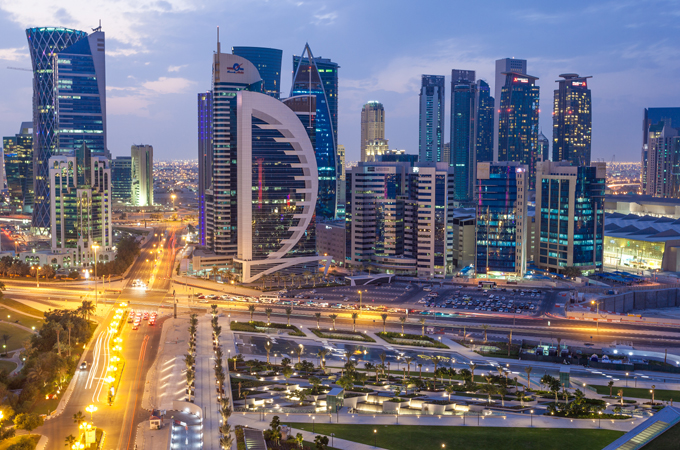
Prudent policies to lift Qatar economic growth: IMF
WASHINGTON, May 19, 2024
Prudent macroeconomic and financial sector policies will further strengthen Qatar’s resilience with average growth expected to be lifted to around 4.5 per cent in the medium term by the significant LNG production expansion and initial gains from implementing NDS3, an IMF report said.
The report was issued following the visit to the country by International Monetary Fund (IMF) team led by Ran Bi during April 30–May 09, 2024, to gather facts on recent economic and financial sector developments, the outlook and the authorities’ policy actions and plans.
“Capitalising on the recent reform momentum and visibility brought by the 2022 FIFA World Cup, Qatar launched the Third National Development Strategy (NDS3) in January 2024 to accelerate its transformation journey toward Qatar National Vision 2030.
"NDS3 provides a blueprint identifying the strategic priorities and reforms needed in the years ahead (2024–30). The strategy is based on a candid assessment of past progress and lessons, highlighting the need to shift from a costly government-funded growth model to a more dynamic private sector-led one, with the state becoming an enabler. Bold initiatives are proposed to accelerate diversification, boost productivity and competitiveness, and strengthen climate sustainability. This comprehensive and ambitious strategy is welcome, and its strategic emphasis is in line with past IMF advice," the team said.
“Qatar continues to demonstrate significant resilience against global uncertainty and geopolitical tensions. The Israel-Gaza conflict has had no visible impact on Qatar, and the tension in the Red Sea had delayed Qatar’s LNG export only temporarily due to re-routing. Qatar stands out as one of the few countries where the sovereign credit rating was upgraded by all three rating agencies over the past months. High frequency financial market indicators have confirmed Qatar’s resilience," Bi said in her report.
“The post-World Cup growth normalisation continued, with the 2023 real GDP growth estimated at 1.3 percent. Growth is likely to bottom out in the near term and gradually pick up to 1¾ percent in 2024–25, with non-hydrocarbon output growth supported by public sector investment, spillovers from the ongoing LNG expansion project, and strong tourism. The medium-term outlook is more favourable, with average growth expected to reach around 4½ percent, on the back of significant LNG production expansion as the North Field East and South projects complete, as well as more buoyant non-hydrocarbon growth as the implementation of NDS3 starts to bear fruit.
"The recently announced North Field West project will increase LNG production by another 20 percent by 2030, further improving the medium-term growth outlook. Headline inflation is expected to ease to 2½ percent in 2024 and gradually converge to 2 percent over the medium term. The external and fiscal accounts will likely remain in surpluses over the medium term, assuming elevated hydrocarbon prices and sustained fiscal prudence. Risks to the outlook are broadly balanced," the report said.
“Broad fiscal discipline has been maintained, and numerous fiscal structural reforms are underway. The 2023 fiscal surplus is estimated at 5½ percent of GDP, with the non-hydrocarbon primary balance improving by more than 2 percentage points (ppts) of non-hydrocarbon GDP, indicating continued fiscal consolidation. Central government debt is estimated to have fallen by 3 ppts to below 40 percent of GDP by end-2023. The 2024 budget envisages further spending cuts from the 2023 outturn, driven by capital expenditure. The medium-term budget (2024–26) has been updated to reflect financing for reform initiatives under NDS3. Moreover, a number of fiscal reforms are ongoing, including to improve the budgeting process, enhance spending efficiency and foster public-private partnership.
“Monetary policy has been consistent with the currency peg to the US dollar. The Qatar Central Bank (QCB) has improved liquidity management through carefully calibrated T-bill issuance, contributing to greater monetary policy transmission. Supported by IMF technical assistance, the QCB is looking to further upgrade its liquidity management framework. Banks remain well-capitalized, liquid and profitable. The non-performing loans (NPLs) edged up to 3.8 percent in 2023Q2 (from 3.6 percent at end-2022) but they are well provisioned. The liquidity coverage and net stable funding ratios were high (at 174 percent and 140 percent, respectively, in 2024Q1). The QCB measures to reduce banks' short-term foreign asset-liability mismatches have encouraged longer-maturity domestic funding. The recently launched Third Financial Sector Strategy aims to deepen financial markets, promote savings, offer greater borrowing and investment opportunities, develop the insurance sector, foster fintech, and achieve greater financial inclusion," it said.
“Structural reforms have continued to advance. Qatar aims to attract talent and bolster a more dynamic labour market by introducing new visa programs, adopting flexible working hours, and launching re-skilling programs. Various initiatives are underway to foster innovation, support start-ups and encourage private sector participation.
"The launch of the Qatar National Renewable Energy Strategy highlights Qatar’s ambition in investing in and utilising renewable energy. The recently released Digital Agenda 2030 sets out ambitious targets and strategic priorities to achieve further digital transformation of the nation, aligned with NDS3 goals. The establishment of the National Planning Council and the National Statistics Center are welcome steps to enhance strategic planning and monitoring, supported by more comprehensive data. The IMF stands ready to support Qatar’s effort to upgrade macroeconomic and financial sector data collection and dissemination," it said. -TradeArabia News Service








